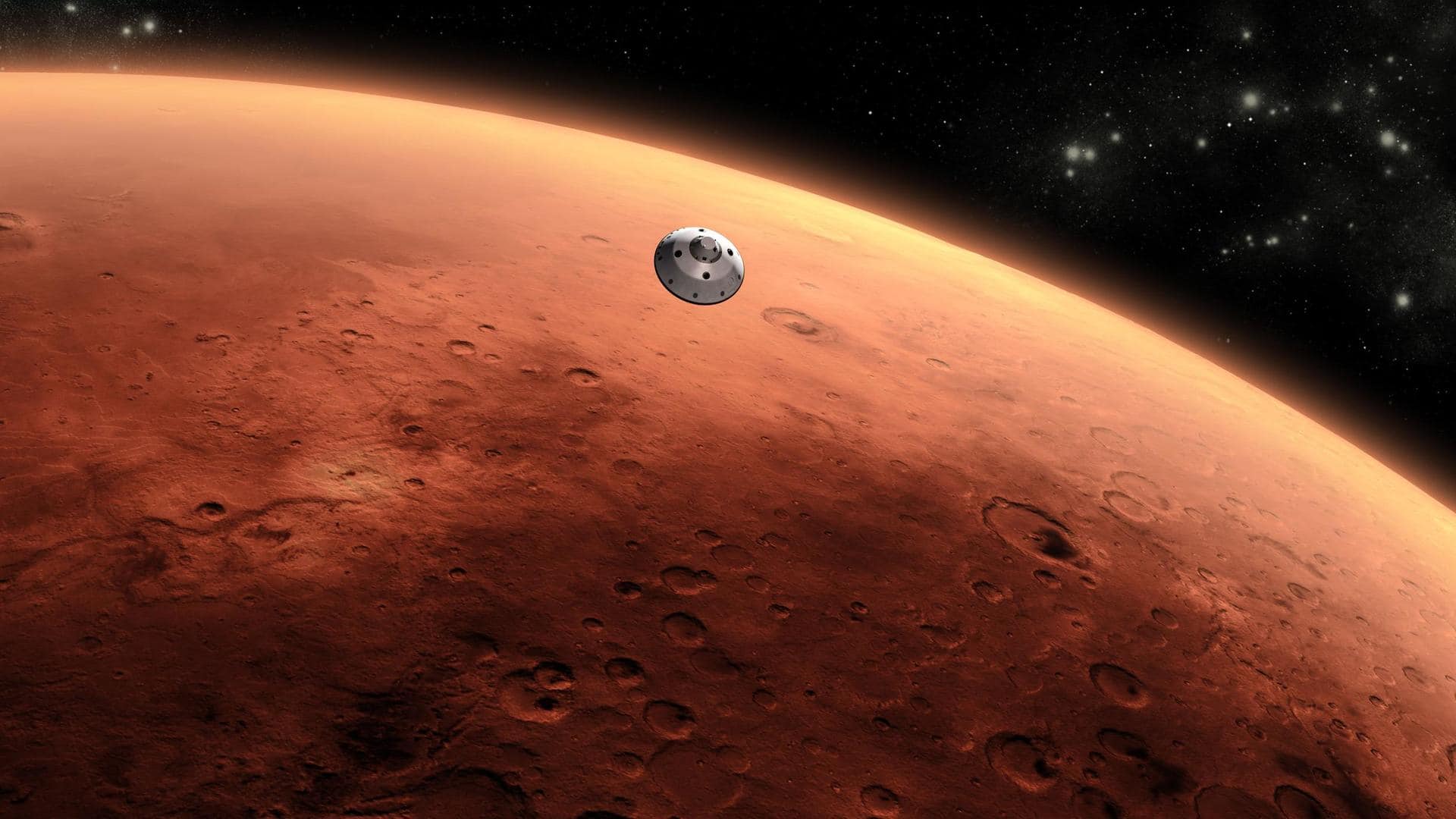
Rovers may not identify signs of life on Mars: Study
What's the story
A new study reveals that the robots currently probing Mars might not be capable to hunt down traces of life on the Red Planet. The results of the investigation further emphasize that Martian samples would have to be brought back to Earth, where they could be tested with advanced equipment, to determine if life ever existed on the now-barren planet.
Context
Why does this story matter?
Given the claims of the study, it is worth mentioning that NASA, in collaboration with ESA, is planning to bring back Martian samples, which have been collected by the Perseverance Rover for in-depth analysis via the Mars Sample Return (MSR) campaign. If everything goes according to plan, samples from Mars could be brought back as early as 2033.
Findings
Previous missions have discovered presence of water on Mars
On Earth, life exists practically everywhere where water is present. The same could be true for Mars. The two Viking orbiters sent by NASA to the Red Planet in 1975 found that liquid water was present on Mars' surface in the past, around three to four billion years ago. Later missions confirmed these findings, indicating that organisms could have thrived on the planet.
Shortcomings
Viking missions could not find robust evidence for organic compounds
But the twin Viking landers could not find "robust evidence" for organic compounds in Martian soil. Even the recent missions, Curiosity and Perseverance rovers have only found traces of simple organic molecules in ancient river deltas and lakebeds on the Red Planet. According to scientists, these compounds could have been produced by geological processes and do not necessarily serve as evidence of life.
Study
How did scientists address the shortcomings?
The hunt for life on Mars could have been inadequate either because the probes were not sensitive enough to identify signs of life on site or because the Red Planet has always been barren. To address these shortcomings, researchers decided to test instruments that are currently in use or which might be sent to Mars in future missions.
Study
The team inspected samples from Chile's Atacama Desert
The team inspected samples from Red Stone, located in the Atacama Desert of Chile, which is one of the oldest and driest deserts on Earth. Red Stone formed under extremely dry conditions, about 100 million to 160 million years ago, and it bears resemblances to the ancient river delta, Jezero Crater, on Mars. The Jezero Crater is also being probed by the Perseverance Rover.
Results
Equipment that was tested could hardly detect signs of life
The Red Stone region is regularly exposed to fog, which acts as the main source of water for microbial life at this site. The testbed versions of instruments that were used for experiments included some with very high sensitivity than currently used on some NASA missions. Even these tools could hardly detect organic signs of life in the Red Stone samples.
Official words
The findings highlight the importance of the Mars Sample Return-mission
"The limited or non-detection by rover testbed instruments of a number of biosignatures of the unique extant and extinct microbes in Red Stone samples also highlight the critical importance of a Mars Sample Return mission, so samples can be thoroughly studied for signs of life in laboratories on Earth," mentions the study published in the journal Nature Communications.
Conclusion
The study suggests the difficulties that Mars probes would face
These findings indicate that Mars probes might have a hard time identifying low levels of organic matter which is predicted to be present on the Red Planet, if microbial life ever existed. The study also emphasizes the importance of bringing back samples to Earth, where they could be tested with advanced equipment, that could help answer the question: Did life ever exist on Mars?